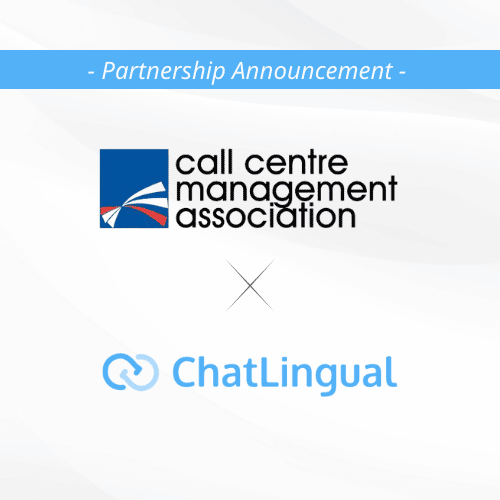Retaining knowledgeable and engaged customer service staff is one of the biggest challenges for contact center operations. And these challenges are amplified when you add multilingual customer support into the mix.
Global businesses may have collectively agreed on English as a primary language, but on an individual level, people will always prefer their mother tongue. Today, more consumers across the globe are expecting—not just desiring—multilingual customer support. That entails real-time, native-language-level customer service interactions when contacting businesses via digital channels.
The Call Centre Management Association (CCMA), in partnership with enterprise multilingual messaging platform ChatLingual, has released a good practice guide (GPG) on delivering multilingual customer support experiences.
Getting Started With Multilingual Customer Support
In this guide, we explore the growing desire for multilingual support. Nearly 80 percent of customers are happier when interacting with businesses in their native language. Here’s the kicker—75 percent of those customers said they would either become repeat customers or pay a higher price for products if they could engage in their native or preferred language.
The CCMA and ChatLingual want to ensure businesses are well-equipped to grasp this opportunity and transform how they deliver customer support.
What Challenges Do Contact Centers Need to Overcome?
Multilingual customer service adds a layer of complexity to contact center operations; however, the benefits greatly outweigh the investment overall.
As a sneak peek, the guide explores the following challenges for contact centers:
- Recruiting, retaining, and training bilingual or multilingual support advisors
- UK shortage of non-English native-language speakers
- Tracking the quality of non-primary language support experiences
- Remote working and its impact on cultural fit to the target language and location
- Tactical scaling of contact center operations internationally
- Identifying and routing specific language customers to support agents with those language skills
How Can Contact Centers Use Technology to Enable Multilingual Support?
While staffing a multilingual contact center or using business process outsourcing (BPO) partners is one option, technology has incredible potential to enable multilingual interactions.
Multilingual and unified support agent desktop solutions can intercept digital conversations in one language and output a translated version on the other side. This acts as a bridge, connecting agents and customers who speak different languages in a truly seamless fashion. Multilingual messaging platforms such as ChatLingual securely interpret and translate digital conversations across 100+ individual languages in real-time.
Download the CCMA Good Practice Guide for FREE to Get Multilingual Customer Service Right!
This guide offers a healthy dose of knowledge, alongside the three next steps that your contact center can take to get multilingual customer service right. Enjoy higher customer satisfaction scores, increased customer retention, and improved CX by implementing multilingual customer service operations!




